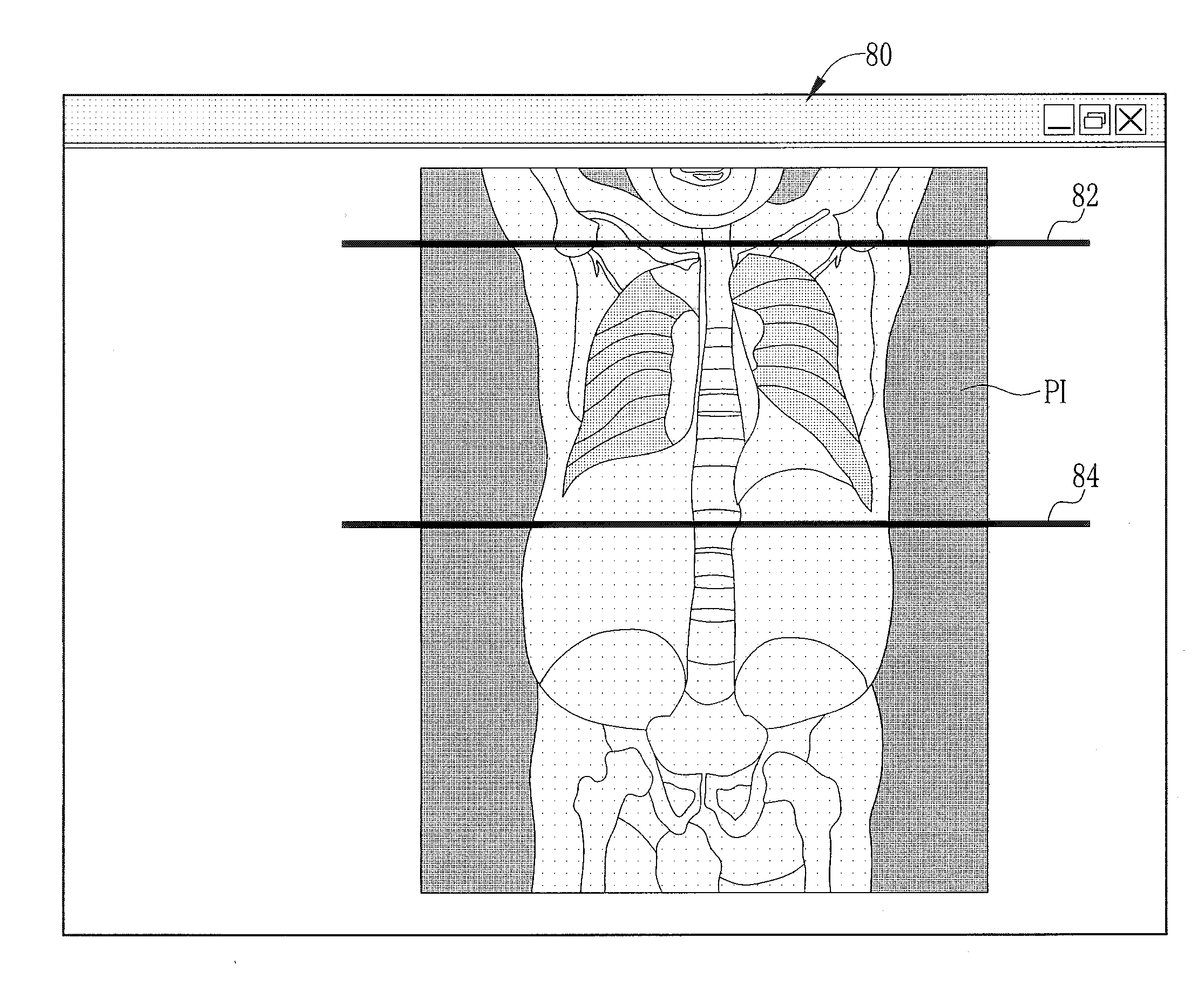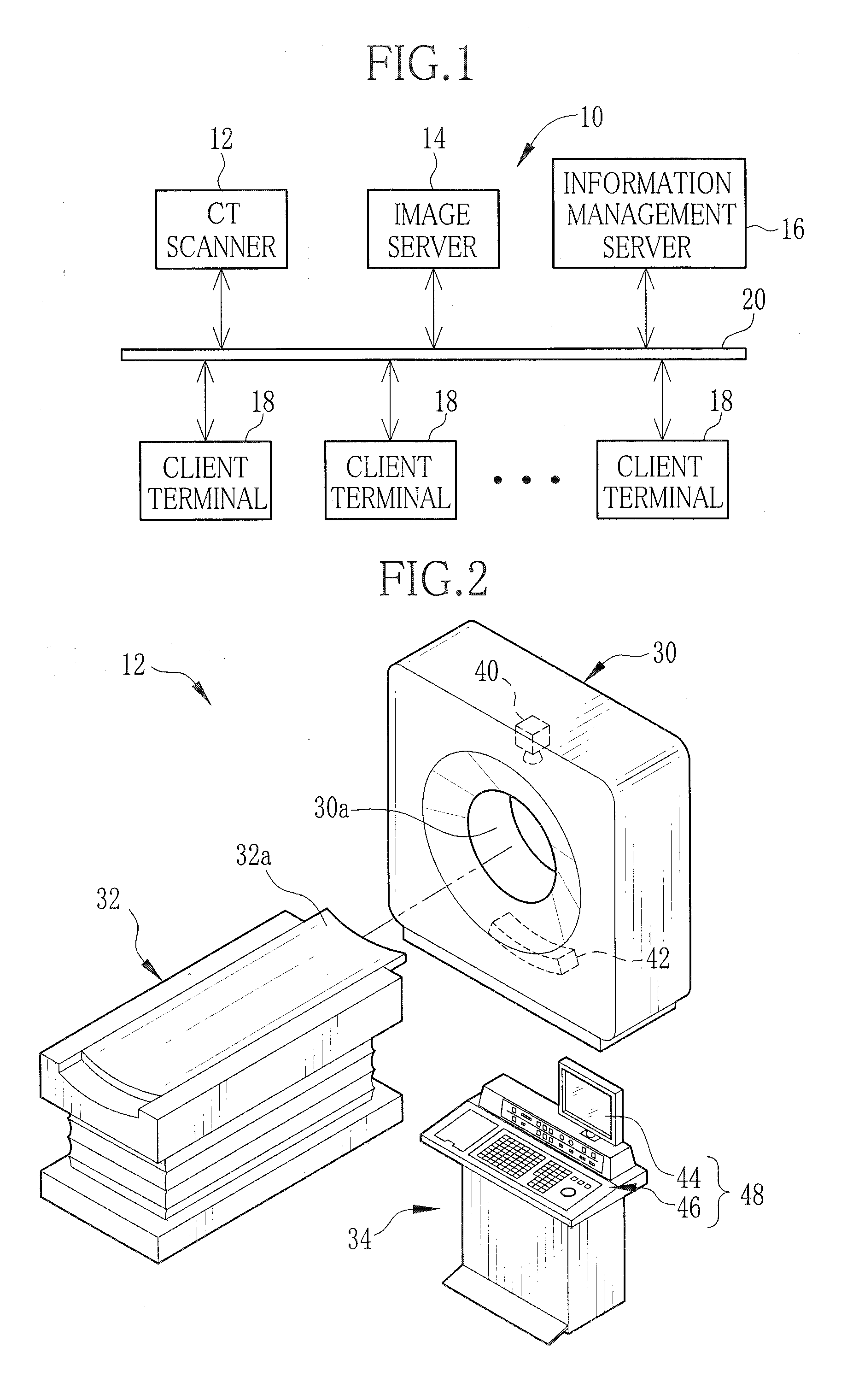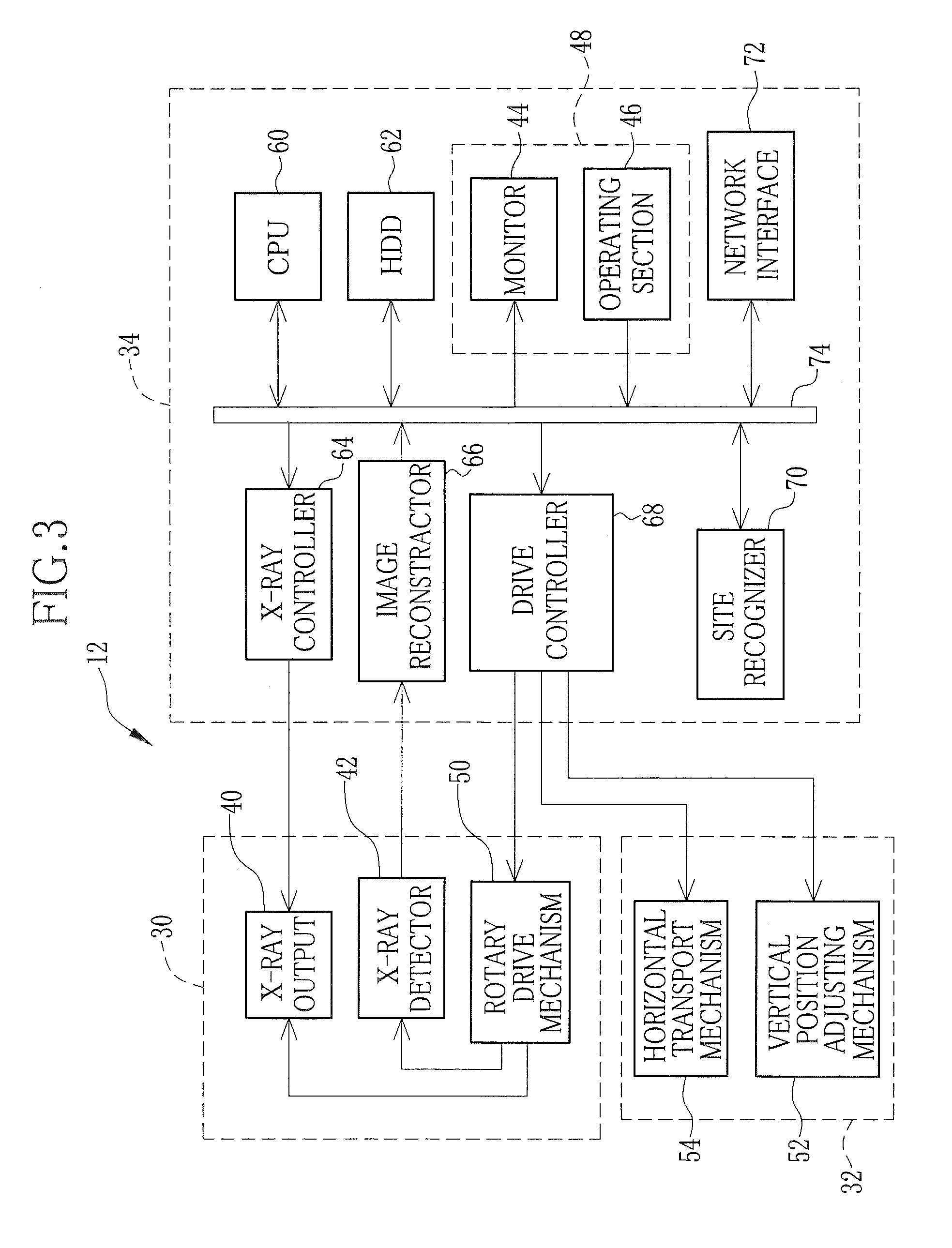Imaging method and modality for medical application
a medical application and imaging method technology, applied in the field of imaging methods and modality for medical applications, can solve the problems of extra time for retaking the formal image, image not always correspond, and difficult especially for tomographic modalities such as ct scanners and mri scanners
- Summary
- Abstract
- Description
- Claims
- Application Information
AI Technical Summary
Benefits of technology
Problems solved by technology
Method used
Image
Examples
second embodiment
[0060]Next the present invention will be described with reference to the flow chart shown in FIG. 7, wherein site recognition is carried out with respect to the whole prescanning image. In the second and following embodiments, equivalent elements to the above described elements will be designated by the same reference numerals, so the details of these elements will be omitted.
[0061]According to the embodiment shown in FIG. 7, a CPU 60 sends data of a prescanning image PI to a site recognizer 70, so the site recognizer 70 analyzes the image data to recognize respective sites contained in the prescanning image PI, in the way as shown for example in FIG. 8. Then the site recognizer 70 sends the result of site recognition to the CPU 60.
[0062]Upon receipt of the site recognition result, the CPU 60 drives a monitor 44 to display the prescanning image PI and start and end lines 82 and 84 in the same way as shown in FIG. 4, to let the operator define a main scanning area with the lines 82 a...
third embodiment
[0064]FIG. 9 illustrates an imaging method wherein site recognition is carried out with respect to the whole prescanning image, and a main scanning area is automatically defined on the basis of the recognized sites.
[0065]Specifically, a CPU 60 sends data of a prescanning image PI to a site recognizer 70, so the site recognizer 70 analyzes the image data to recognize respective sites contained in the prescanning image PI, in the way as shown for example in FIG. 8. Then the site recognizer 70 sends the result of site recognition to the CPU 60.
[0066]Upon receipt of the recognition result, the CPU 60 reads out the corresponding order data from an HDD 62 and defines on the basis of the order data and the recognition result a main scanning area corresponding to the site of inspection designated by the order data. After defining the main scanning area, the CPU 60 drives a monitor 44 to display start and end lines 82 and 84 on the prescanning image PI, showing the defined main scanning are...
fourth embodiment
[0070]FIG. 11 shows the present invention. As shown in the flow chart of FIG. 11, corresponding order data is read out from an HDD 62 immediately after a prescanning image PI is captured. Then, the captured prescanning image PI is displayed with start and end lines 82 and 84 on a control screen 80, and a window 90 is popped up beside the prescanning image PI to display information on the site of inspection designated by the order data. Thereby, the operator can pay attention to which site of inspection while defining a main scanning area by shifting the lines 82 and 84 on the prescanning image PI.
[0071]When the operator completes defining the main scanning area, a CPU 60 sends data of the prescanning image PI and setup data of the main scanning area to a site recognizer 70, and gets a site recognition result. Then, the CPU 60 judges based on corresponding order data and the site recognition result if the site in the defined main scanning area corresponds to the site of inspection de...
PUM
 Login to View More
Login to View More Abstract
Description
Claims
Application Information
 Login to View More
Login to View More - R&D
- Intellectual Property
- Life Sciences
- Materials
- Tech Scout
- Unparalleled Data Quality
- Higher Quality Content
- 60% Fewer Hallucinations
Browse by: Latest US Patents, China's latest patents, Technical Efficacy Thesaurus, Application Domain, Technology Topic, Popular Technical Reports.
© 2025 PatSnap. All rights reserved.Legal|Privacy policy|Modern Slavery Act Transparency Statement|Sitemap|About US| Contact US: help@patsnap.com



